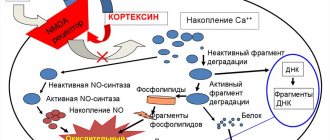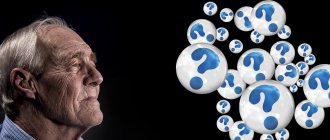Phenazepam is a powerful benzodiazepine that is classified as a minor tranquilizer because it relieves stress and anxiety and helps the patient feel better. calm and relaxed. Phenazepam is reportedly about five times stronger than Valium (another well-known tranquilizer), so it's easy to take too much and overdose. Phenazepam is not used as a medicine in Europe, but is used in Russia to treat epilepsy and neurological disorders. Phenazepam previously had a reputation as a “legitimate drug” or “counterfeit Valium”. It is mainly sold as either a fine white powder or a liquid.
How is phenazepam taken?
Phenazepam can be inhaled or swallowed. Like other benzodiazepines, it can be used as a cold medicine. Some may use it to relieve the effects of acid, speed or ecstasy after a "noisy" night.
At the same time, phenazepam has a very strong effect. Often people end up in the hospital as a result of taking too much . This drug is one of the most common causes of overdose.
Is it possible to take phenazepam to treat a hangover?
Sometimes the question arises whether it is worth taking phenazepam after alcohol to eliminate increased anxiety, irritability and insomnia, which are frequent companions of a hangover . It’s better not to do this: during a hangover, a fairly high dose of ethyl alcohol may still be present in the blood, which will lead to a number of unpleasant consequences due to the combination of the effects of a depressant and a tranquilizer.
Drug therapy can be prescribed by a doctor for the complex treatment of alcoholism, but in this case only a specialist can correctly calculate the dosage and select accompanying medications. You should not drink the medicine uncontrollably, as it is addictive and can cause a more severe addiction, which you cannot get rid of on your own.
Taking the drug during an acute hangover can cause the following negative consequences:
- The opposite effect of taking tranquilizers. Irritability and nervousness appear, and outbreaks of aggression directed at oneself and loved ones are possible.
- A sharp loss of strength, loss of performance. A hangover in itself negatively affects your mood; the use of phenazepam can only worsen the situation.
- CNS depression up to loss of consciousness, respiratory depression and death. This condition can occur suddenly, which is especially dangerous if there are no loved ones nearby who can properly provide assistance.
- Deep drunken sleep, which can cause cardiac and respiratory arrest. The risk of crash syndrome also increases: due to compression of soft tissues, blood circulation is disrupted, deep sleep does not allow a person to take a more comfortable position.
- Retrograde amnesia, problems with the functioning of the central nervous system. Taking the drug for a hangover in adolescents, the elderly, and people with psychological disorders is especially dangerous.
Serious consequences can occur even with a one-time use of a tranquilizer without a doctor’s prescription. Without special knowledge, it is easy to exceed the permissible dosage, resulting in a threat to life.
Risks and consequences
Here are the main risks of taking this drug:
- Phenazepam is a powerful benzodiazepine and can easily be overdosed on.
- Phenazepam is a depressant, so mixing it with other depressants such as heroin, tranquilizers or alcohol can result in enhanced effects and possible death.
- The effects begin to appear after a couple of hours. This means there is a risk of repeat dosing before people feel the effects , again increasing the risk of overdose.
- Phenazepam is used to make counterfeit Valium (diazepam).
Consequences of using phenazepam with alcohol
The medicine is also used in narcology to alleviate the consequences of quitting alcohol - withdrawal syndrome (including alcohol psychosis). But one of the conditions for safe treatment is a categorical ban on drinking. Drinking alcohol with phenazepam can lead to the following consequences:
- confusion;
- slow breathing, heartbeat, shortness of breath, feeling of lack of air;
- hypotension;
- tremor;
- impaired coordination of movements and speech;
- severe drowsiness;
- in severe cases (in the presence of concomitant diseases, drug overdose), the interaction of phenazepam with alcohol can lead to coma.
Simultaneous consumption of alcohol increases the likelihood of adverse reactions:
- decreased memory and cognitive function;
- psychomotor agitation, attacks of unmotivated anger, aggression, irritability;
- psychosis with hallucinations, obsessive thoughts of suicide;
- muscle spasms (with concomitant epilepsy - seizures);
- severe insomnia;
- headache;
- vomit;
- bowel disorders;
- severe violations of the filtration function of the liver;
- lesions of the urinary system.
As a drug, phenazepam is practically safe, but many addicts take it specifically to enhance the euphoric effect of the drug. The American FDA has released data on several deaths caused by the simultaneous use of this tranquilizer and psychostimulants (abroad, the medicine is available in aerosol form). The combined effect of phenazepam with alcohol is no less dangerous.
On average, the half-life of the drug is 8 to 10 hours. But in some patients this period can reach 18–20 hours. Metabolism of the drug occurs in the liver and, accordingly, with concomitant pathologies of the hepatobiliary system (which often occurs with alcohol abuse), this process slows down. Therefore, when answering the question of how long after phenazepam you can drink alcohol, doctors recommend waiting at least 2-3 days after finishing treatment.
But experts emphasize that with alcoholism, the risk of developing addiction to a tranquilizer is increased. That is why, in case of addiction, the drug is prescribed with caution and for a short period. Ideally, its use is carried out in a hospital and only to relieve the symptoms of withdrawal syndrome, then the patient is prescribed “milder” sedatives.
Drinking alcohol during a course of treatment with tranquilizers is contraindicated. And the question of when alcohol can be taken after phenazepam is best decided with a doctor on an individual basis.
The emergence of a strong addiction
All benzodiazepines, and phenazepam in particular, can cause serious psychological and physical dependence.
Due to the development of tolerance, some users have to increase the dose to get the same “effect” or simply feel normal again.
If you have used phenazepam for a long period of time, you may experience noticeable withdrawal symptoms, including restlessness, insomnia, and tremors; and as with all tranquilizers, these problems can last a considerable time .
Description of the drug
The product has been used in practical medicine for more than 40 years (it was synthesized back in 1974). But along with high efficiency, doctors are increasingly faced with a number of difficulties. They are mainly associated with uncontrolled long-term use of the medication, which often leads to the formation of psychological and physical dependence. On the one hand, phenazepam should be dispensed from pharmacies only with a doctor’s prescription, but it is no secret that purchasing it does not always require the appropriate documents with a doctor’s signature. Thus, self-medication, non-compliance with the dosage regimen, rules of administration, in particular the interaction of phenazepam with alcohol and other psychostimulants can lead to very serious consequences, the most dangerous of which is an overdose.
Mechanism of action, pharmacological characteristics
The main target of the tranquilizer is the GABAergic system. Its main neurotransmitter is γ-aminobutyric acid, which “works” as a kind of “inhibitory” transmitter. It plays a key role in regulating the processes of excitation and relaxation of the central nervous system. Phenazepam and its therapeutically active metabolites enhance the effect of γ-aminobutyric acid.
The drug has the following therapeutic effect:
- anti-anxiety;
- anxiolytic;
- hypnotic;
- sedative;
- muscle relaxant;
- anticonvulsant.
Alcohol interacts with the GABAergic system in a similar way, so drinking alcohol after phenazepam significantly increases its activity, which is accompanied by a feeling of general drowsiness, extreme fatigue, slower reactions, and slower thinking.
Dosage regimen
When taken orally, it is quickly absorbed from the digestive tract, peak concentration in the blood is reached approximately 1–1.5 hours after consumption. But the therapeutic result lasts for a long time, which ensures normal sleep, elimination of anxiety, pathological arousal and other neurological and mental symptoms.
For treatment on an outpatient basis, a daily dose of 0.75-1.5 mg is prescribed (divided into 2-3 doses), in a hospital setting it is increased to 3-5 mg per day (in severe cases - up to 10 mg). To avoid withdrawal syndrome, the medication is stopped gradually, slowly reducing the dose.
Criminal practice
Phenazepam is a hard drug, which means it is illegal to possess, give to friends, or sell.
A person's possession of this substance can result in up to two years in prison and/or a substantial fine.
Distribution or sale, even to your friends, may result in up to 14 years in prison and/or a substantial fine.
Fact: While under the influence of phenazepam, you may not be able to drive the next day. If you are caught, you will receive a large fine, be suspended from driving and even risk going to prison.
Is it possible to take the medicine with low-alcohol drinks?
There is often an opinion that beer and other low-alcohol drinks are much less harmful, so they can be combined with phenazepam and other drugs without serious consequences. This statement is fundamentally erroneous : the presence of even a small dose of ethyl alcohol in the drink makes it completely incompatible with taking tranquilizers.
It is also impossible to combine beer or alcoholic cocktails with phenazepam because it greatly enhances the effect of ethanol. The result will be severe intoxication, which develops very quickly. Beer and carbonated alcoholic cocktails are quickly absorbed , and in combination with tablets this gives an unpredictable result.
Even if extreme caution is used, long-term use of phenazepam is unsafe in any case. It leads to the formation of addiction, which is complemented by rapidly developing beer alcoholism.
Medical use
Phenazepam is a 1,4-benzodiazepine, the same family of drugs that includes diazepam, oxazepam, and temazepam. Phenazepam was first synthesized and developed in 1975 in the Soviet Union, where since 1978 it has become one of the most common benzodiazepines used to treat sleep disorders, anxiety, alcoholism and epilepsy.
Phenazepam has not been licensed in other countries around the world. Limited use explains the paucity of peer-reviewed literature on the drug. The pharmacological profile of phenazepam corresponds to classical benzodiazepines. It reduces anxiety, seizures and motor activity. It is more effective than diazepam (about 5-10 times) and has more severe and long-lasting side effects. The effects of phenazepam can be mitigated by the selective benzodiazepine antagonist flumazenil.
In humans, phenazepam has a relatively long half-life of 60 hours, and side effects can last up to 5 days (some reports mention up to 3 weeks) after oral administration. It increases the duration of hexane-induced sleep several times and is superior to diazepam in this regard. Convulsions caused by high doses of metrazol (100 mg/kg) are completely prevented by phenazepam (1.4 mg/kg). In many clinical studies, phenazepam (0.0025 mg/kg) has shown greater and longer-lasting sedation than diazepam (0.005 mg/kg).
At a relatively high dose, phenazepam causes muscle hypotension, deep sleep and coma. Like other benzodiazepines, phenazepam is highly toxic when used concomitantly with other CNS depressants, especially opiates and alcohol, increasing the risk of respiratory depression and death. Various deaths have been reported after administration of phenazepam (confirmed analytically), mostly in combination with other CNS depressants.
Medicine knows cases of abuse of the drug. With relatively high dosages or prolonged use, signs of severe withdrawal are observed. Phenazepam is regularly found in contraband parcels seized by police or customs, indicating its widespread use for drug purposes.
What is phenazepam
Phenazepam was created during Soviet times and was used mainly in military medicine as a strong tranquilizer with anticonvulsant and hypnotic effects. It was used to treat depression, insomnia, epilepsy, phobias, to relieve seizures, and anxiety syndrome. After all the clinical trials, phenazepam could be bought in pharmacies without a prescription, as it was considered a mild drug for relaxing and calming the nervous system.
Subsequently, it was revealed that this tranquilizer is quickly addictive and, given such dependence, is completely unpredictable when combined with other drugs. Now the drug is sold in pharmacies only with a doctor's prescription. The instructions indicate the dose to be taken.
In addition to all the listed diseases, phenazepam is also used to treat alcohol and drug withdrawal. Therefore, phenazepam has a special relationship with alcohol.
Due to its composition and action, this drug is actually a drug and, like any drug, can be addictive, so it is very important that the correct dosage is chosen. If the dose is exceeded, the opposite effect, characteristic of drug intoxication, is possible.
Pharmacodynamics of the substance
Phenazepam belongs to the group of benzodiazepines, well-known and well-described drugs primarily used as sedatives. Phenazepam has a structure similar to that of clonazepam and properties similar to those of lorazepam in terms of therapeutic action.
Phenazepam and its metabolite 3-hydroxyphenazepam appear to be pharmacologically active with approximately 5 to 10 times greater potency than diazepam, likely due to the bromine atom in the molecule. Typically, as described in older Russian literature, phenazepam is used to treat neurotic disorders, alcoholism, epilepsy, sleep disorders, anxiety disorders and in combination with haloperidol to treat schizophrenia.
Indications for use
The medication is effective for any disease (both mental and somatic origin), accompanied by fear, anxiety, restlessness, irritability, and an unstable psycho-emotional state.
Indications for its use are:
- phobias;
- panic attacks, and it is used not only to relieve the acute symptoms of an attack, but also to prevent it;
- psychoses;
- insomnia;
- premedication: usually used to prepare for upcoming surgery under local anesthesia, as the medicine enhances the effect of general anesthesia;
- neurasthenia, neurosis-like disorders;
- schizophrenia (exclusively as part of complex therapy);
- resistant form of epilepsy (in combination with anticonvulsants);
- autonomic dysfunction, which is accompanied by attacks of arrhythmia, tachycardia, sweating, dizziness, shortness of breath (however, first of all, chronic diseases that occur with similar symptoms should be excluded).
Contraindications
- individual intolerance;
- severe respiratory tract diseases;
- chronic decompensated liver damage;
- closed-angle glaucoma (including a predisposition to its development);
- severe depression;
- states of shock.
Clinical research by doctors
Clinical studies of phenazepam conducted on thousands of patients suffering from various neurotic, neuropathic and psychopathic disorders accompanied by tremor, irritability, tension, anxiety and sleep disturbances have shown that phenazepam is an effective and safe sedative.
Phenazepam has shown effectiveness in the treatment of chronic alcoholism, especially with alcohol abstinence. It is successfully used in anesthesiology in preparing patients for surgical operations and is able to enhance the effect of general anesthetics and narcotic analgesics. In a clinical study, the effect of phenazepam was studied in patients suffering from adjustment disorder. Adjustment disorder is defined as “a state of emotional disturbance affecting the performance of social functions that occurs during the period of adjustment to major life changes or stressful events in the patient's life.” The study compared 46 patients receiving phenazepam with 44 patients receiving the non-benzodiazepine anxiolytic etifoxine. No difference in anti-anxiety effect based on the Hamilton Anxiety Rating Scale was observed between both treatments.
In the study, 60% of patients receiving phenazepam reported that they were “significantly improved,” while the remaining patients reported “minimal improvement.” More than 75% of patients receiving etifoxine rated their condition as “much improved,” 10% as “minimally improved,” and 10% as “worsened.” Eight patients in the phenazepam group withdrew from the study due to side effects.
Side effects reported were drowsiness, dizziness, difficulty waking up, muscle weakness, headache, decreased alertness, and myasthenia gravis. The study results show that phenazepam is effective in the treatment of adjustment disorders.
Briefly about Phenazepam
Phenazepam is a potent drug of the benzodiazepine group, which has a complex effect. Acts primarily on the central nervous system.
Composition, properties
The drug contains the active ingredient of the same name - phenazepam (bromodihydrochlorophenylbenzodiazepine). This component has the ability to reduce or suppress anxiety, fear, anxiety, and relieve emotional stress. It has a general calming effect on the central nervous system, reducing its response to external irritants.
Most often, the medication is used to achieve the following effects:
- Sedative . Has a calming effect on the human body. The action is aimed at restoring the balance between the processes of inhibition and excitation of the central nervous system, thereby reducing its excitability.
- Anticonvulsant . Helps quickly relieve convulsions and spasms, which can lead to irreversible consequences, for example, bronchospasm, respiratory arrest.
- Axiolytic . The effect is similar in effect to a sedative. It has a calming effect: eliminating anxiety, strong feelings, and normalizing sleep.
- Muscle relaxant . Relaxation of all muscle groups in the body. Most often, anesthesiologists resort to muscle relaxant drugs. This effect in Phenazepam is weakly expressed.
- Sleeping pill . Designed to facilitate the onset of sleep and ensure its sufficient duration. The drug is widely used in their practice by psychiatrists to calm violent and agitated patients.
Thus, the tranquilizer Phenazepam has a complex effect on the central nervous system, which allows its use in various areas of medicine.
Phenazepam is not an antipsychotic drug. Cannot stop delusions and hallucinations. therefore, it is not prescribed for schizophrenia and other psychoses.
Indications
Phenazepam is used in the treatment of various diseases of the nervous system and chronic mental disorders. Prescribed for the following conditions:
- insomnia, difficulty falling asleep, interrupted sleep;
- neurosis-like, neurotic, psychopath-like, psychopathic and other conditions;
- short-term mental disorders;
- autonomic dysfunctions;
- nervous tics, hyperkinesis;
- phobias of any type;
- epilepsy;
- muscle rigidity;
- insensitivity to other neuroleptics.
The use of the drug as part of complex therapy for alcohol withdrawal syndrome is also an indication .
Phenazepam can only be purchased with prescription . The state exercises strict control over the prescription of this tranquilizer for therapeutic purposes.
Contraindications
The use of the medication is contraindicated in case of myasthenia gravis, poisoning with a number of tranquilizers, antipsychotics, sleeping pills, and narcotic analgesics. Serious contraindications – age under 18 years, pregnancy and lactation, high sensitivity to the components of the drug.
Use with caution when:
- low protein concentration in the blood;
- impaired renal and/or liver function;
- angle-closure glaucoma;
- history of drug dependence;
- tendency to abuse psychoactive drugs;
- severe brain pathologies;
- severe psychosis;
- night apnea.
Treatment of elderly patients is also carried out carefully .
Side effects
The medicine can cause a lot of side effects, because... the active component affects the function of the nervous system, causing a constant craving for sleep and lethargy. Taking a tranquilizer can provoke an allergic reaction in people with hypersensitivity. In relation to the peripheral and central nervous system, the following side effects of Phenazepam are observed:
- dizziness, drowsiness;
- movement coordination disorder;
- decreased ability to remember and concentrate;
- slow motor and mental reactions;
- constant fatigue;
- unsteady gait;
- disorientation;
- confusion, etc.
If the dosage was moderate , the person's side effects increase or the therapeutic effect of Phenazepam increases. With a large dose of overdose, cardiac activity is depressed and breathing problems occur. In this case, emergency hospitalization and resuscitation measures are required.
A person who combines a tranquilizer with any alcoholic drink quickly falls asleep , but after waking up cannot remember what happened to him the day before while intoxicated.
Process of assimilation
There is not much confirmed scientific information about the metabolism of phenazepam in humans. On average, it takes a person about 4 hours to achieve complete absorption of one dose into the blood. The usual clinical dose of 0.5-2.0 mg produces therapeutic plasma concentrations of 20 to 60 mcg/L. Phenazepam is slowly eliminated from the body. The withdrawal process can take approximately 60 hours, which is generally typical for benzodiazepines. However, patients with epilepsy who received 2 mg phenazepam intramuscularly or intravenously reported a much faster metabolism of 14.9 to 15.6 hours.
Toxicity
Like other benzodiazepines, common effects of phenazepam toxicity include depression, imbalance, amnesia, dizziness, loss of coordination, slurred speech, confusion, drowsiness, blurred vision, ataxia, muscle hypotension, tachycardia (or bradycardia), and both auditory and visual hallucinations. These effects may last up to 3 weeks after administration and may vary and alternate. In 61 cases that were reported in Sweden over an 18-month period, 14 (23%) of the 61 patients experienced symptoms for more than 5 days after dosing, with depression lasting up to 3 weeks.
Effect on driving
Benzodiazepines impair driving skills. Phenazepam levels in forensic tests from four impaired arrests in Wisconsin, USA, ranged from 0.380 to 5.00 mg/L, more than 50 times the therapeutic range of 0.02 to 0.06. mg/l. The effects observed in drivers include symptoms of depression, decreased central nervous system activity, slurred speech, lack of balance, slow reactions, drowsiness and confusion. Of the 4,007 confirmed drug-impaired driver arrests in the United States, 141 were positive for phenazepam (3.5%). The average phenazepam blood concentration was 0.061 mg/L, but it is worth noting that the range was quite wide (0.004-3.600 mg/L).
In 2003 in Finland, phenazepam was found in 20 cases of arrests of drivers under the influence of drugs (range 0.018 to 0.4 mg/l).
Doctor who checked the article: Yulin Alexander Sergeevich Updated: September 15, 2021
Combination of Phenazepam and alcohol
Phenazepam and alcohol, the compatibility of which has been studied for several years, are strictly not recommended to be used at the same time. The consequence of taking alcohol and tranquilizers is an increased negative effect on the central nervous system. This can manifest itself in the form of “drunk sleep” - a dangerous condition accompanied by disturbances in the functioning of the respiratory system, intense vomiting during sleep, as well as cardiac arrest, involuntary bowel movements and urination.
The combination of a tranquilizer and ethyl alcohol significantly increases the side effects of Phenazepam:
- Confused consciousness.
- Suicidal thoughts.
- Depressed mood.
- Sharp outbursts of fear, panic, aggression.
- Impaired orientation in space.
- Development of hallucinations.
- Memory impairment.
- Impaired ability to coordinate attention.
That is why Phenazepam is absolutely incompatible with any strong drinks - both strong and low alcohol.










